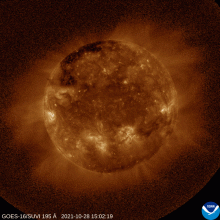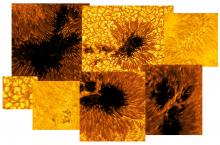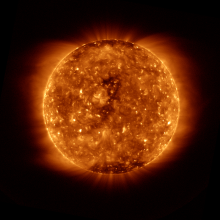Listen to today's episode of StarDate on the web the same day it airs in high-quality streaming audio without any extra ads or announcements. Choose a $8 one-month pass, or listen every day for a year for just $30.
You are here
Spoerer Minimum
The Sun isn’t quite steady. It goes through an 11-year cycle of magnetic activity. When the cycle is at its peak, there are lots of sunspots and other powerful events. But no two cycles are alike. The most recent cycle, for example, was weak. And over the centuries, both weak and strong cycles tend to come in clumps.
One of the weakest “clumps” of the last millennium was the Spoerer Minimum. It may have lasted more than a century, and been the “quietest” of all the Sun’s known quiet periods.
It’s named for German astronomer Gustav Spoerer, who discovered it. It could have started as early as 1415, and lasted until about 1540, although the exact dates are uncertain.
In part, that’s because no one was counting sunspots at the time. Instead, scientists deduce what was happening on the Sun by looking at tree rings and ice cores. When the Sun is quiet, it allows more cosmic rays to enter the solar system. They interact with Earth’s atmosphere to make radioactive forms of carbon and other elements. Trees take up some of the carbon, and some of the other elements are trapped in the ice. So measuring those elements reveals how active the Sun has been over the ages.
The intensity of the solar cycle appears to have a small effect on Earth’s climate. During the Spoerer Minimum, there’s evidence that the planet was cooler than average. So studying the solar cycle can help us understand more about conditions right here on Earth.
Script by Damond Benningfield






